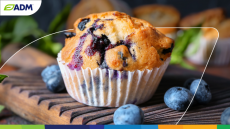Politicians raise acrylamide scare in Holland
consumption limits for acrylamide, potentially leading to
legislation that would force processors to reduce the potential
carcinogen in their products.
Halbe Zijlstra and Janneke Snijder-Hazelhoff, two members of the Dutch House of Representatives, have publicly expressed their concerns over the substance, which some scientific studies indicate may be carcinogenic. In a series of questions fired at the ministers responsible for food quality and for health, the two query why the government has not set a maximum limit for acrylamide levels in food. "Are you aware that organisations such as the Dutch Institute for Health and Environment, [the] Food Centre and the World Health Organisation, label the substance as harmful and that the Institute for Food Safety of Wageningen University and Research Centre has determined a maximum allowable amount of 0.5 microgram/kilogram bodyweight per day?" they said. The Institute for Food Safety has calculated that Dutch children between the ages of one to six are exposed to an average amount of 0.98 microgram/kilogram bodyweight of acrylamide per day, a level two times as much as the limit set by the WHO, they pointed out. Using calculations from the Bundesamt für Verbraucherschutz und Lebensmittelsicherheit in Germany, the two legislators determined that a child at the age of three would have consumed about eight times the WHO limit if he ate a 50 gram bag of chips. They calculated that the same child would intake 10 times the limit by eating 50 grams of breakfast cereal. "Are you willing to make proposals as soon as possible as to install norms with respect to the maximum allowable concentrations of acrylamide in food in the Netherlands?" they asked the ministers. "Are you willing to communicate the dangers of acrylamide to the Dutch population?" The government ministers are expected to answer their questions within six weeks. A wide range of cooked foods - prepared industrially, in catering, or at home - contain acrylamide at levels between a few parts per billion (ppb) to over 1000 ppb. The foods include bread, fried potatoes and coffee as well as specialty products like potato crisps, biscuits, crisp bread, and a range of other heat-processed products. Acrylamide hit the headlines in 2002 when scientists at the Swedish Food Administration first reported unexpectedly high levels of the potential carcinogen in carbohydrate-rich foods cooked at high temperatures. Until then acrylamide was known only as a highly reactive industrial chemical, present also at low levels for example in tobacco smoke. Since the Swedish discovery a global effort has been underway to amass data about this chemical. More than 200 research projects have been initiated around the world, and their findings co-ordinated by national governments, the EU and the United Nations. Acrylamide appears to form as a result of a reaction between specific amino acids, including asparagine, and sugars found in foods reaching high temperatures during cooking processes. The process is known as the Maillard reaction. This occurs at temperatures above 100°C (212°F).












